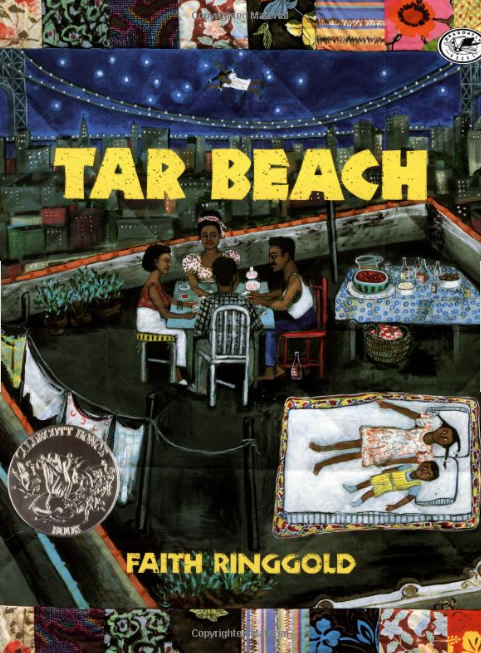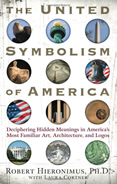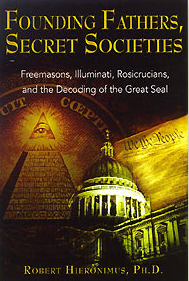Dr. Bob Hieronimus in New York as part of Panel of Artists on Race, Religion, Social Justice and Inspiration
Thursday, February 25, 2010 from 6 to 8pm New York City
If One Can Anyone Can
All you Gotta Do Is Try – Faith Ringgold
 On Thursday, February 25th from 6-8 PM you are invited to join Faith Ringgold and Dr. Bob Hieronimus and several other artists and writers for “An Evening with Faith Ringgold and Friends: Artists and Writers Discuss Race, Religion, Social Justice and Inspiration.” This event is co-sponsored by the Temple of Understanding and is taking place at the ACA Galleries at 529 West 20th Street. Go to www.ACAGalleries.com for more info.
On Thursday, February 25th from 6-8 PM you are invited to join Faith Ringgold and Dr. Bob Hieronimus and several other artists and writers for “An Evening with Faith Ringgold and Friends: Artists and Writers Discuss Race, Religion, Social Justice and Inspiration.” This event is co-sponsored by the Temple of Understanding and is taking place at the ACA Galleries at 529 West 20th Street. Go to www.ACAGalleries.com for more info.
Faith Ringgold is a painter, sculptor and author of numerous award-winning children’s books. Tar Beach, her first children’s book, won The Caldecott Award and was made into an animated short for HBO. The original story quilt is in the collection of The Solomon R. Guggenheim Museum, NY. Faith Ringgold’s Children’s Museum of Art and Storytelling, located in Sugar Hill, Harlem and designed by noted architect David Adjaye, will break ground in September 2010.
The moderator of the event is Elizabeth Sackler, founder, Elizabeth A. Sackler Center for Feminist Art, Brooklyn Museum, NY. The other panelists besides artist, author and activist Dr. Bob Hieronimus, are Tim McHenry, Curator, Rubin Museum of Art, and Lisa E. Farrington, author of Creating Their Own Image: The History of African-American Women Artists and several other books.
Readers of Dr. Hieronimus’s books United Symbolism of America (2008), Founding Fathers, Secret Societies (2006) and America’s Secret Destiny (1989) will know that at every opportunity to speak about Race, Social Justice and Inspiration, Hieronimus will invariably bring up the League of the Iroquois Indians and their forgotten influence on the Founding Fathers and the social justice system in this country.
 |
 |
 |
Despite the continued but dwindling efforts of the gatekeepers to ignore the importance of the Native Americans to the formation of the American government, most historians now agree that the representative form of government practiced by the League of the Iroquois not only predated the U.S. Constitution, but helped shape it and other fundamental expressions of the American character. When this research was published in the 1980s, right wing pundits and the gatekeepers of what passes for history tried to prevent the discussion, as they do with any theories that counter their mandate of the white male leading the way in all innovation. George Will, Pat Buchanan, Elisabeth Tooker, Phyllis Schlafly, Robert Bork and, of course, Rush Limbaugh, were among those who tried to explain away as an “elaborate hoax” the historians’ conclusions that the Native Americans influenced the Founding Fathers. They just couldn’t deal with the fact that centuries before Columbus arrived in the New World, democracy was alive and well, just waiting for the Founding Fathers to discover it.
Many of our founders (most notably Franklin, Paine, Jefferson, and Adams) wrote in detail what they learned from studying the form of representational government of the Iroquois League, which they were astonished to discover was established as far back as the 12th Century CE. Among the wonders described below in the excerpt from Exemplar of Liberty by Bruce Johansen and Donald Grinde, the League of the Iroquois treated women as equals, rejected slavery, and allowed for the freedom of religion. They had a Great Law of Peace as a kind of Constitution, and it was symbolized by their Great Tree of Peace. It has not gone unnoticed that despite adopting some of the enlightened ideals by which the League of Iroquois governed themselves, our founders ignored two or their core values resulting in 200 more years of humiliation and degradation for our nation’s women, slaves and former slaves.
Excerpts from Exemplar of Liberty by Donald Grinde and Bruce Johansen
The Great Law included provisions guaranteeing freedom of religion and the right of redress before the Grand Council. It even forbade unauthorized entry into homes – measures that sound familiar to United States citizens through the Bill of Rights.
Women played a profound role in Iroquois political life. Although the Iroquois were bound together by a clan and chieftain system, which was buttressed by a similar linguistic base, the League of the Iroquois was much more than simply a kinship state. The basic unit of government was the “hearth,” which consisted of a mother and her children. Each hearth was part of a wider group called an otiianer, and two or more otiianers constituted a clan. The word otiianer specifically referred to the female heirs to the chieftainship titles of the League. The otiianer women selected one of the males within their group to fill any of the fifty seats in the League.
All the sons and daughters of a particular clan were related through uterine families that often lived far apart. In this system, a husband went to live with his wife’s family, and their children became members of the mother’s clan by right of birth. Through matrilineal descent, the Iroquois formed cohesive political groups – headed by the “clan mothers” – that had little to do with where people lived or from what village the hearths originated. All authority sprang from the people of the various clans that made up the Iroquois Confederacy. The clan mothers appointed the male delegates and deputies who, after consultation within the clan, spoke for them at tribal meetings where issues and questions were formulated and subsequently debated in council.
Instead of formal instruments of authority, the Iroquois governed behavior by instilling a sense of pride and belonging to the group through common rituals and the careful rearing of children. Iroquois youth were trained to enter a society that was egalitarian, with power more evenly distributed between male and female, young and old, than was common in Euro-American society.
The Great Tree of Peace
In his vision, [the prophet] Deganawidah saw a giant evergreen (the Great White Pine) reaching to the sky and gaining strength from three counter-balancing principles of life. The first law of nature was that a stable mind and healthy body must be in balance so that peace between individuals and groups could occur. Secondly, Deganawidah believed that human conduct, thought, and speech were requirements for equity and justice among peoples. Finally, he divined a society in which physical strength and civil authority would reinforce the power of the clan system.
Deganawidah’s tree had four white roots that stretched to the four directions of the earth. This tree was humanity, living within the principles governing relations among human beings, and the eagle perched on top of the giant pine was humanity’s lookout against enemies who would disturb the peace. His vision was a message from the Creator, bringing harmony to human existence and uniting all peoples into a single family guided by three principles.
The primary national symbol of the Haudenosaunee was the Great White Pine, which served throughout the Great Law as a metaphor for the Confederacy. Its branches sheltered the people of the Five Nations, and its roots spread to the four directions, inviting other peoples, regardless of race or nationality, to take refuge under the tree. The Haudenosaunee recognized no bars to dual citizenship; in fact, many influential figures in the English colonies and early United States were adopted into Iroquois nations.
Each of the five nations maintained its own council, whose sachems were nominated by the clan mothers of families holding hereditary rights to office titles. The Grand Council at Onondaga was drawn from the individual national councils, but could also nominate sachems outside the local hereditary structures based on merit alone. These sachems, called “pine tree chiefs,” were said to have sprung from the body of the people much as the symbolic Great White Pine had grown from the earth.
The rights, duties, and qualifications of sachems were explicitly outlined, and the clan mothers could remove (or impeach) a sachem that was found guilty of any number of abuses of office.